Soldiers night vision systems and night sights for small arms. Part 6 final
In general, these optical devices, being lighter devices, are designed for those categories of military personnel who are not equipped with full-fledged thermal imaging systems, for example, they are ideal for unit commanders.
Flir's Recon M24 is basically a handheld surveillance device, although it can also be used as a helmet system.
Flir Systems offers two lightweight small handheld thermal imaging devices. The Recon M24 adds to the soldier’s total 400 grams, including two three-volt CR123 batteries, which provide a running time over three hours at standard temperature. It is noteworthy that removing one of the two batteries does not affect the operation, which means that they can be replaced without turning off the monitoring device. The Recon M24 has an uncooled matrix of 320x240 pixels, but a matrix of 640x480 of pixels is available at the request of the consumer. Optics provide the 24 ° x18 ° field of view with x1 magnification, while the digital magnification is x2 and x4. The device has a monochrome display of size 640x480, a USB connector is used for transferring photographs, and RS-170 or PAL connectors for outputting video signals. The Recon M24 can be held by hand or mounted on a tripod, it can be carried in a pocket due to its small size; The Recon M24 has a length of 117 mm, a height of 76 mm and a width of 64 mm.
The second model, the Recon M18, comes standard with a higher resolution sensor (although a lower resolution is available on request). The field of view is 18.7 ° x14 °, the device also has two digital x2 and x4 magnifications, although an additional lens with x3 magnification is also offered. The image is displayed on a color oled display with a pixel size of 640x480; A set of features that enhance image quality is available, including automatic brightness and gain control, manual control, polarity switching, and improved sharpness and contrast. There are video outputs NTSC or PAL. The M18 device has a pointer with an 30 mW infrared laser (operating mode) / 0,5 mW (training mode), although an option is also available in the visible spectrum. The power source is the same as the M24 model with the same operating time from one set of batteries. The device weighs just over 80 grams, the dimensions are also slightly larger than 127x83x57 mm. The M24 can be submerged into the 12,6 depth meter for one hour.
Flir's ReconM18 device weighs less than half a kilo. This thermal imaging device, due to its high resolution, as well as the integrated laser pointer, is well suited for the group commander.
DRS
DRS Technologies' portfolio includes the MX-2A lightweight thermal imaging camera, weighing less than 1,25 kg and intended for reconnaissance and surveillance during patrol missions. It has a matrix of 320x240 pixels in size based on an uncooled vanadium oxide microbolometer with a 25 micron pitch operating in the 8-12 micron range, which guarantees detection of human activity at a distance of 550 meters in clear weather with a probability of 70%. The field of view is 18 ° x13.5 °, which is halved when the digital zoom function x2 is activated. Images are displayed on a monochrome black-and-white display of 640x480 pixel size, which can be transmitted either in white-hot mode (thermal pattern display mode with hot objects showing white and cold objects in black) or black-hot , thermal picture display mode with indication of hot objects in black color and cold objects in white color) and exported via RS-170 video output. Four push buttons at the top of the device allow you to select the brightness gain and polarity. The camera is powered by four 123 batteries. The MX-2A is durable thanks to its rubber-coated aluminum case; It is 229 mm long, 125 mm wide and 86 mm high. The MX-2A surveillance device has the same line of sight as the LTWS sight, using a specialized interface it can also be used as a sight. The MX-640A thermal imaging camera of a higher level is also available on the basis of a matrix of 480x3 pixels. It has an increase of x3, the detection range of 1100 meters and weighs almost 1,5 kg.
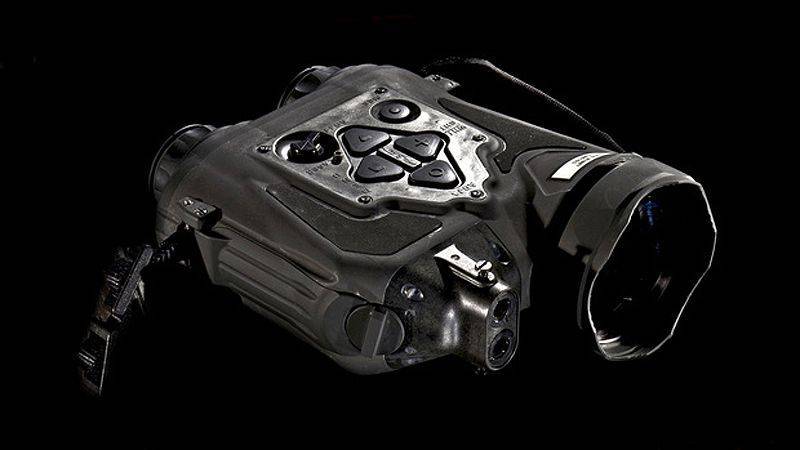
BAE Systems offers to the unit commander its versatile thermal imaging binoculars, which include a digital magnetic compass and laser pointers in the visible and invisible spectrum.
BAE SYSTEMS OASYS
BAE Systems Oasys offers Universal Thermal Binocular universal thermal imaging binoculars weighing just 1,06 kg without batteries based on an uncooled bolometric matrix of 640x480 pixels in 17 micron pitch to the infantry unit commander.
The device is also known by the acronym UTB, it can be equipped with three lenses with different magnifications, namely, standard x3.7 with a diagonal field of view 10.5 ° and a detection distance 2,22 km, near x2.1 with a field of view 19 ° and a detection distance of one kilometer and farthest with a field of view 6.5 ° and detection range 2,66 km. An electronic zoom x2 is also available. The binoculars are powered by three CR123 batteries or two L91 lithium batteries, guaranteeing 5,5 hours or 2,25 hours of operation, respectively. It has similar components with most BAE Systems' thermal imaging sights, such as a digital magnetic compass, as well as laser pointers in the visible and infrared spectral range 3B, respectively, with an output power for learning 20-35 mW and 0,5-0,7 mW and for normal 20 operation -35 mW. UTB can store up to 100 uncompressed bmp images. The laser rangefinder version is also available under the designation UTB LRF, it has the same width 140 mm and height 74 mm, but slightly longer (206 mm against 178 mm) and heavier (1,38 kg), the optical-electronic characteristics remained identical.
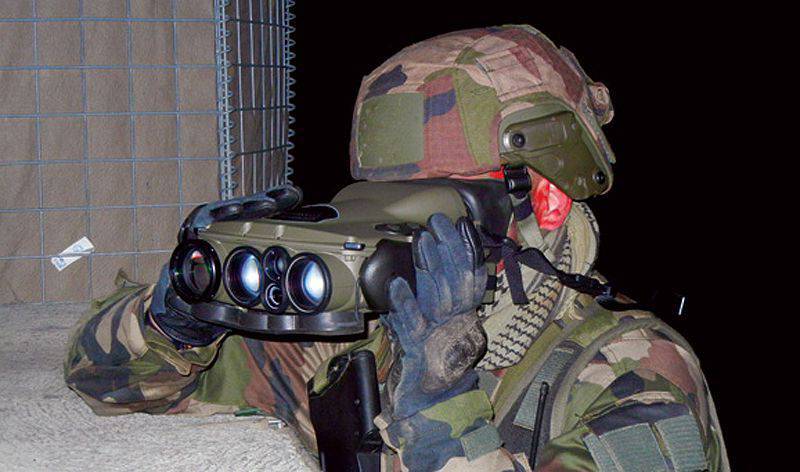
Jim Medium Range is part of the French system Félin. It features an uncooled laser rangefinder sensor and a digital magnetic compass.
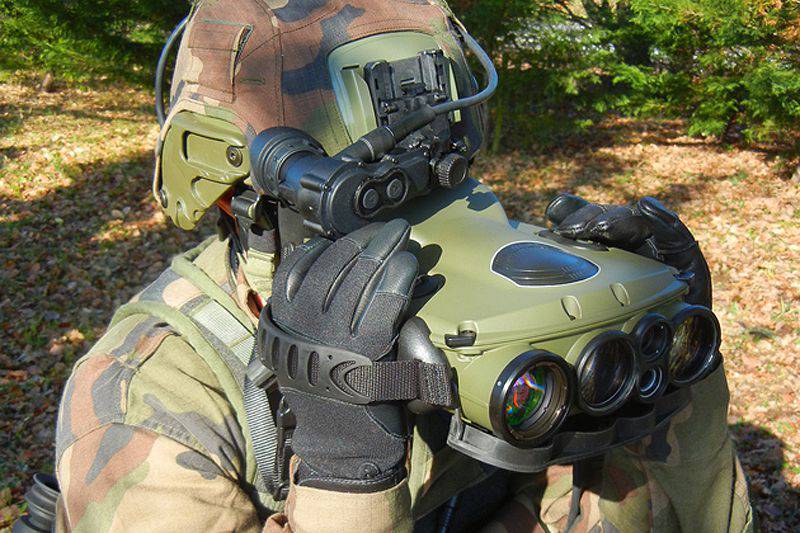
Despite the fact that the Sagem Jim-LR night-vision binoculars with a cooled matrix, which have target acquisition capabilities, are high-end systems, it is nevertheless part of the French modernization program for the soldier Félin
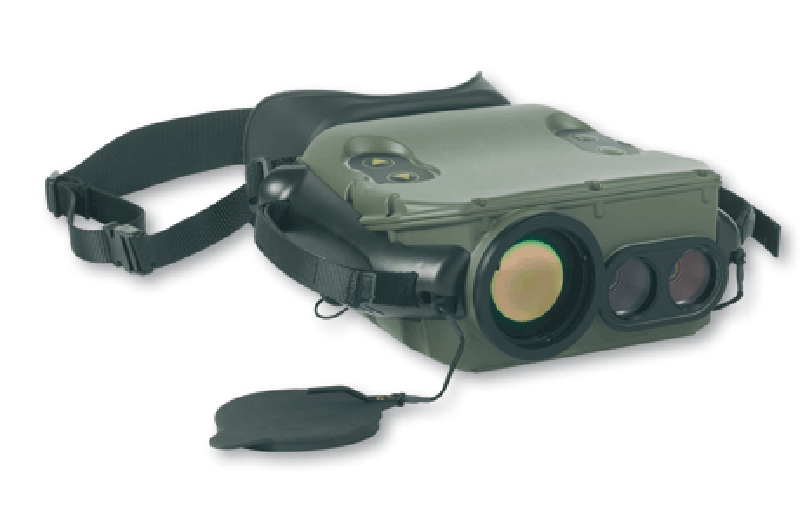
With the exception of the uncooled sensor, Jim UC retains all the characteristics of the LR variant.
SAGEM
The Jim MR (MR - Medium Range, medium range) surveillance device from Sagem was selected by the French army for its Félin program. The device weighs less than two kilograms, it is equipped with an uncooled thermal imager with a field of view 7.6x5.7 ° and has a digital zoom x2 and x4. Typical detection, recognition and identification ranges are respectively 4000 / 1500 / 750 meters for a vehicle and 2450 / 850 / 400 meters for a person. An eye-safe laser range finder with a range of 10 km, operating at a frequency of 1,54 micron, as well as a digital magnetic compass with an azimuth of 360 ° and elevation angles ± 40 ° are integrated into the device. Jim MR does not have a built-in GPS system, but due to its analog and digital connectors it can be connected to an external system in order to obtain a coordinate grid of targets. The device is powered by a special battery that provides three hours of work; It is also compatible with AA batteries and can be connected to an external power source.
The soldier in the framework of the Felin program can also be equipped with a JIM LR long-range observation device, which is binoculars weighing 2,8 kg without batteries based on a cooled sensor of size 320x240 pixels operating in the 3-5 micron range. This high-level system has a color channel in the visible spectrum with a field of view of 3 ° x2.25 °, and a thermal imaging channel has two fields of view: a narrow 3 ° x2.25 ° and a wide 9 ° x6.75 °. The JIM LR device is equipped with stabilization, digital enhancement, image fusion, contrast enhancement, photo and video recording. A laser rangefinder on the 10 km, a laser pointer, a digital magnetic compass and a GPS system are built into it. It was manufactured over 3000 Jim LR appliances.
A simplified version with a mass of 2,5 kg under the designation Jim Observe has only thermal imaging and daytime channels. Recently, Sagem developed the Jim UC model (UC - uncooled, uncooled), which retains all of the characteristics of the Jim LR, but is equipped with an uncooled matrix of pixels of size 640x480. In the narrow field of view, it provides the same 3 ° x2.25 ° as in the day channel, whereas in a wide field of view it provides 8.6 ° x6.45 °. The cooling system reduced the weight to 2,3 kg. The detection, recognition and identification distances for Jim UC are respectively 5 / 2 / 1 km for the vehicle and 3 / 1 / 0,5 km for humans.
With a mass of just 1,6 kg, the Thales Sophie Light is one of the lightest day / night binoculars on the market.
THALES
Sophie Lite was first shown at DSEI 2013; It is the newest member of the Thales Sophie multifunctional surveillance and targeting system, which weighs only 1,6 kg. Sophie Lite includes an uncooled thermal matrix of 640x480 pixels, operating in the 8-12 micron range, which provides an 7 ° field of view and has x3 electron magnification. In thermal imaging mode, a person can be determined at a distance of 2,5 km and recognized at 1 km, whereas for a vehicle, the distance is respectively 5 and 2 km. The day channel is based on a sensor element operating in the visible and near infrared part of the spectrum; It has two fields of view 6 ° and 3 °. The channel has image stabilization, autofocus and electronic zoom and provides detection and recognition of a target the size of a person at a distance of 6 and 3 km and a vehicle on 10 and 6 km. The device has a display size of 800x600 pixels. Range measurement is provided by a 1 Class Range Laser Rangefinder with a maximum range of 4 km and an accuracy of five meters. Positioning is provided by the internal GPS system; The standard system is C / A code (coarse positioning code for objects), P (Y) - an encrypted code for the exact location of an object is optional. An AN / PSN-13 GPS receiver or an AN / PSN-11 GPS receiver (better known as Dagger and Plugger) can be attached to a Sophie Lite device.
The orientation is provided by a digital magnetic compass with an accuracy of 0,5 ° and an inclinometer with an accuracy of 0,1 °. Sophie Lite is powered by AA batteries, they work six hours in television mode and four hours in thermal imaging; Rechargeable BB2590 or BB2557 batteries can be used with 48 or 24 hours, respectively, depending on the task being performed. Internal memory allows you to save up to 100 photos or one hour of video, external interfaces PWR, RS232 / 422, Ethernet and USB are available. According to Thales, the capabilities of the Sophie Lite device are reduced by 20% compared to the systems of the highest segment of the Sophie family, but not least, the weight is reduced by more than 50%. Fully developed and available for production, the Sophie Lite device was developed with the company's funds and, although the first customer has not yet been found, Thales claims that universal capabilities are in demand in the global market, particularly in infantry, in special forces and internal units. security.
The commander of the infantry of the Italian army with a multifunctional manual day / night target designator Selex ES Linx during the exercises on the program Soldato Futuro
SELEX
The commanders of the Soldato Futuro infantry units should receive a Linx multifunctional manual day / night designator designed and manufactured by Selex ES. Its thermal imaging channel has recently been improved by a new sensor, currently this uncooled pixel matrix 640x480 (the original Soldato Futuro Linx had an 320xXNNXX matrix). With an appropriate lens, it provides x240 magnification and 2.8 ° x10 ° field of view, digital magnification is x7.5 and x2. The color day channel has a wide field of view 4 ° x8.6 ° with increasing x6.5 and a narrow field of view 3.65 ° x2.7 ° with increasing x2.2.
Linx also has a digital magnetic compass and a GPS system, as well as a laser rangefinder operating at a frequency of 1,55 micron, whose range in the newest version has been increased to more than three kilometers. A laser pointer operating in the near infrared spectrum was also added, which can be seen through the day channel. All channels have a crosshair, electronically programmable. VGA color video is output through the USB port. Together with AA batteries, the Linx instrument now weighs 2,7 kg. According to the company Selex ES, it guarantees a detection range of approximately 1,5 km and the recognition range of 650 meters for a person; these figures for a heavy vehicle are 2,8 km and 1,3 km. Selex ES also intends to further develop its systems by installing miniature cooled sensors and introducing additional functions. The first updated system is expected by mid-year 2015.
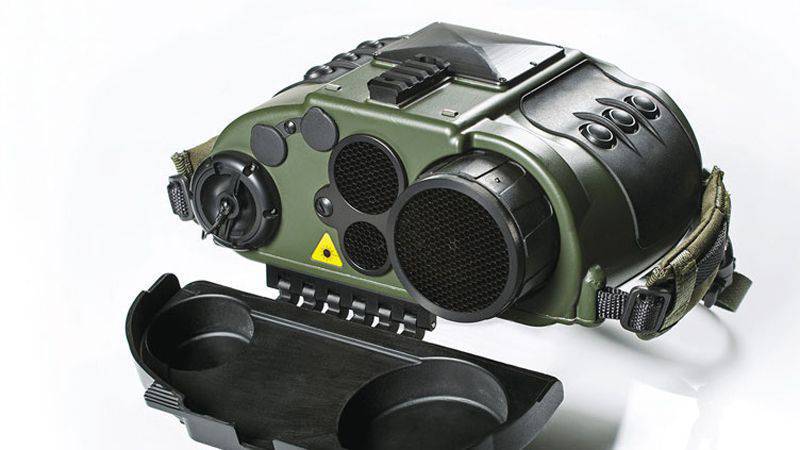
Day / night binoculars with a thermal imaging channel and a laser rangefinder produced by the Finnish company Millog Lisa
MILLOG
The Millog Lisa manual target detection system received its last order from the Finnish army in May 2014. This system includes an uncooled thermal imager, an optical day channel, a safe laser range finder with a range of over 6 km, a digital magnetic compass and GPS with a wireless connection. It can detect a vehicle on 4,8 km, recognize on 1,35 km and identify on 1 km, the same numbers for humans are 2,9 km, 700 meters and 550 meters. The Lisa weighs 2,4 kg with batteries, providing more than 10 hours of operation.
VECTRONIX
The lightest systems that can be supplied to the commander of the patrol group include the Vectronix Moskito. This is binoculars with enhanced image brightness, which includes an optical day channel with x5 magnification and 6 ° field of view with gradation in thousandths. The night channel is based on a Photonis XR5 handset with x3 magnification and 10 ° field of view, also has a laser range finder with a range of 4 km, a digital magnetic compass and a clinometer for measuring vertical and horizontal angles and a GPS system; The device weighs almost 1,2 kg. Moskito is powered by two CR123A lithium batteries, providing autonomy for more than 24 hours and more 2000 measurements. This device is in service with various units of many armies.
The Vectronix Moskito Surveillance Device has been selected by many countries (including Germany and the UK) for soldier modernization programs.
THERMAL VISION TECHNOLOGIES
For lower-level commanders, the Ukrainian company Thermal Vision Technologies offers a series of glasses for observation; The latest model in this family is the Archer TG A-8 / 75M. It contains an uncooled matrix of either 336x256 or 640x512 pixels, which is connected to a 75 mm F / 1.0 germanium lens, which has a 4.4 ° x3.4 ° field of view or a xNUMX ° x8.3 ° field of view (x which adds a x6.4 digital zoom and xXXXX digital zoom and xNUMX ° x2 °). The laser rangefinder with a wavelength of 4 microns and a maximum range of measurements 1,55 km is built into the system, which can also incorporate a photo and video recording module. The detection, recognition and identification ranges are respectively 1,5, 2200 and 600 meters. Archer TGA-300 / 8M is powered by four elements of the form factor AA, which in the case of rechargeable batteries provide eight hours of battery life, and in the case of standard batteries, ten hours of operation. The dimensions of this binoculars with a mass of 75 kg with batteries are 1,2x190x146 mm. Also available with an 90 mm lens, the total weight of which is reduced to about 55 grams.
ELBIT
The thermal imager Mini Coral from Elbit Systems is lightweight and relatively low cost. It has everything you need to capture targets: a full-fledged GPS system, day and night channels, a laser range finder and a compass. An uncooled matrix on vanadium oxide with a size of 384x288 pixels and with a 8-12 micron pitch has 6 ° x4.5 ° and 18 ° x13.5 ° channels. Two daytime channels are also available: one with a 12.6 ° x9.5 ° field of view with a high-resolution monochrome CCD camera that can be observed by a laser spot camera while the target is illuminated with a laser target designator, and the second with a 3 ° x2.25 ° field of view with a high-resolution color CCD camera. The 1 Class Laser Rangefinder, operating on a 1,55 micron wave, has a maximum range of 2500 meters; azimuth coordinates are provided by a digital magnetic compass with root-mean-square accuracy 0.5 °; location is determined by the built-in GPS system; Mini Coral can record seven hours of video. The memory of the system can contain not only the coordinates of the target, but also images of the targets and can be connected to the combat control system. Battery life is eight hours, weight with batteries is 2,1 kg. According to Elbit, the Mini Coral thermal imager is able to detect a vehicle at a distance of 3,5 km and a person per 2 km, the recognition ranges are respectively 1,5 km and 800 meters.
Night-vision goggles and thermal imaging with two channels
Channel consolidation devices, although they represent a solution of a fairly high level due to their cost, nevertheless become a reality. The US Army equips part of its military not only with thermal imaging systems, but also with combined ones, in which image brightness enhancement sensors and thermal imaging sensors are combined.
The advantages of combining the brightness enhancement channel and the infrared channel are clearly shown in the figure. On the left, only brightness enhancement, on the right, an image with much greater detail due to the Thermoteknix Clip-IR thermal imaging module
American soldiers began to receive the AN / PSQ-20 device, also known as Enhanced Night Vision Goggle (improved night vision goggles), around the middle of the 2009 year; This system was developed by Exelis (part of ITT) and Raytheon, but is manufactured by Exelis. In this monocular, the image brightness enhancement tube and the microbolometric matrix of the latest generation size 320x240 are combined. The device allows the user to set the level of fusion due to the optical overlay of two viewing modes and thereby optimize the level of understanding of the situation. The system with x1 magnification provides the 38 ° field of view in the gain mode and the 28 ° field of view in the thermal mode. Four AA batteries provide 7,5 hours of continuous use when using both sensors.
EXELIS
Exelis later began production of the AN / PSQ-20A. In this advanced version, also known as Sengv (Spiral Enhanced NVG), three batteries are installed, it has a reduced life cycle cost, better weight centering and a significantly increased level of manufacturability. In 2012, L-3 Warrior Systems was awarded a contract for 50 million dollars to manufacture Engv 3800 devices, also known in the military environment under the designation AN / PSQ-20B.
WILCO
In this promising area, the French company Wilco offers the TNVM model, in which images from the Gen-2 + or Gen-3 generation brightness enhancement tube are optically combined with the image from an uncooled microbolometer tube. The latter comes with two resolutions, 160x120 (option TNVM-A) and 384x288 pixels (option TNVM-B). The image is displayed on a color VGA display with a pixel size of 640x480. The built-in infrared emitter can be used either as a pointer or as an illuminator. The x1 thermal channel also has a digital x2 and x4 magnification. TNVM is powered by four AA batteries that provide 5-7 hours of continuous operation. The battery pack can be fixed either under the glasses or installed in the back of the helmet to partially compensate for the hanging weight (the battery pack weighs 250 grams against the weight of glasses 650 grams).
VECTRONIX
The Vectronics Tacs-M thermal attachment device is based on an uncooled microbolometric matrix of 320x240 size, the image of which is projected onto a microdisplay mounted in front of the image brightness tube, thereby adding a thermal image to the image with enhanced brightness. This device can operate in three modes: full thermal imaging, contour or patrol to ensure the detection range of 500 meters and the recognition range of 300 meters. Tacs-M has an x1 magnification and 20 ° field of view, the thermal image is shown in the center of the image with enhanced brightness. Polarity can be switched, and brightness can be adjusted. The device is powered by a CR123A lithium battery, which provides 2,5 hours of operation at 20 ° C. Attachable Tacs-M device adds a total of 150 grams to the original points of image brightness enhancement.
A soldier with standard night vision goggles, to which a Thermoteknix ClipIR 150 device is added to his right eye
THERMOTEKNIX
The British company Thermoteknix has developed another Thermal Imaging Attachment ClipIR, which has an excellent 40 ° field of view, corresponding to the field of view of any standard night vision goggles, which thus preserves the original image size. ClipIR is based on an uncooled microbolometer matrix of 384x288 size from amorphous silicon with a 25 micron pitch connected to a 13,2 mm F / 1.2 lens. The resulting image is projected onto the 800x600 display, from which the optical periscope transports it in front of the image from the luminance tube. The system is powered by a single AA battery, operating time varies from 4,5 hours at temperatures from 0 ° C to + 50 ° C to 2,5 hours at -40 ° C. One wheel at the top of the device allows you to control all functions. ClipIR weighs 150 grams with battery and easily attaches to most glasses and monoculars with which it is compatible, such as the PVS-7, PVS-15, PVS-14, MUM-14, PBS-14 and PBS-18.
The French company Wilco International has developed TNVM night vision goggles with channel combination. Two channels, thermal imaging and brightness enhancement, are combined in one device; To the mass of 650 grams of the device itself, you need to add a set of batteries with a mass of 250 grams
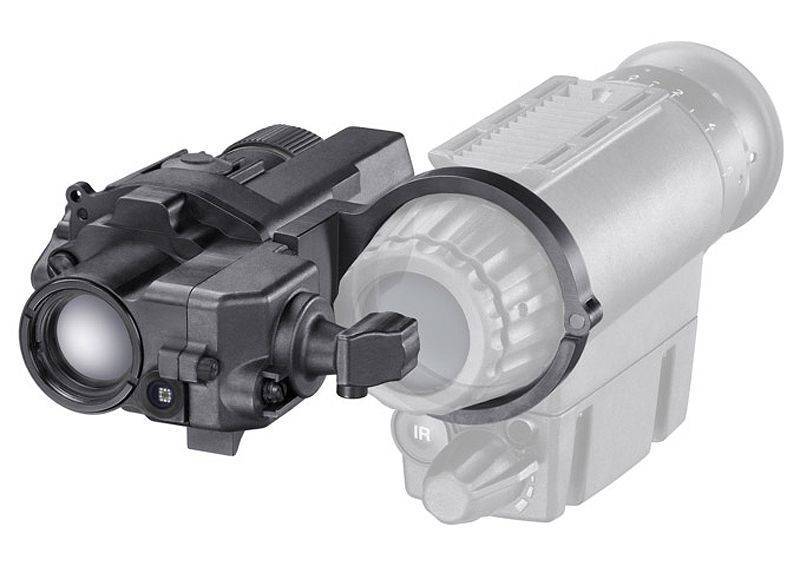
A Tacs-M thermal attachment device with a mass of just 150 grams can be mounted in front of any image enhancement system, providing a significant improvement in image quality.
FLIR
Flir offers a M32-C mountable thermal imager based on an 320x240 microbolometric array of pixels on vanadium oxide, which provides an 32 ° field of view. It can be mounted on any eye and comes in two different configurations, with an external and internal battery. The first configuration weighs 190 grams without batteries, but its weight increases to 258 grams with the addition of two CR-123 batteries, which guarantee more than three hours of operation. The second configuration features a battery pack with three AAA batteries, providing eight hours of use; The mass here is distributed between the 164 gram unit itself and the 187 gram battery unit. Although the total mass in this case is slightly higher and amounts to 353 grams, however, the device in this configuration has smaller dimensions, improved balancing and increased operating time.
Materials used:
en.wikipedia.org
www.newcon-optik.com
www.drs.com
www.baesystems.com
www.millog.fi
www.thalesgroup.com
www.sagem.com
www.flir.com
www.vectronix.com
www.elbitsystems.com
www.wilco-international.com
www.thermoteknix.com
www.tvt-thermal.com
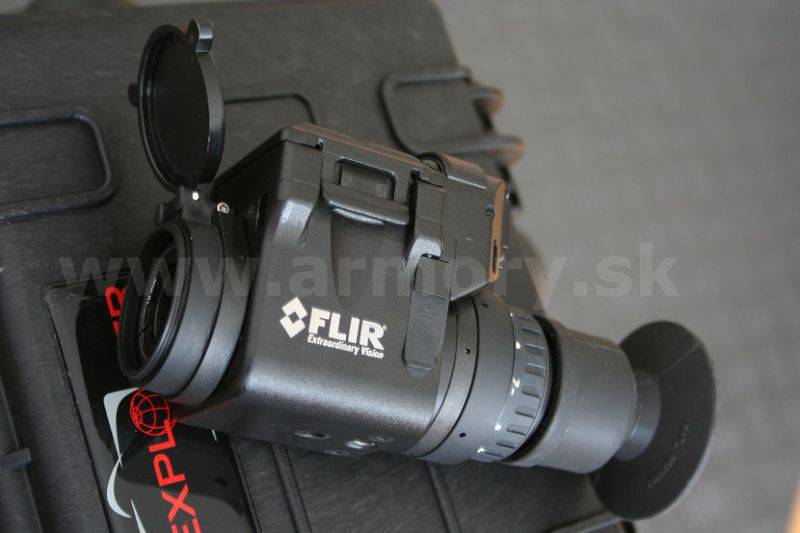
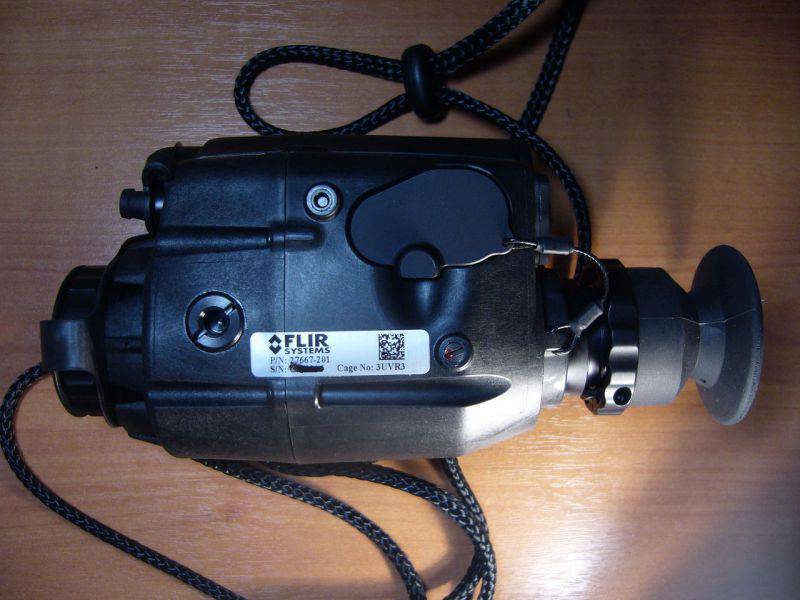
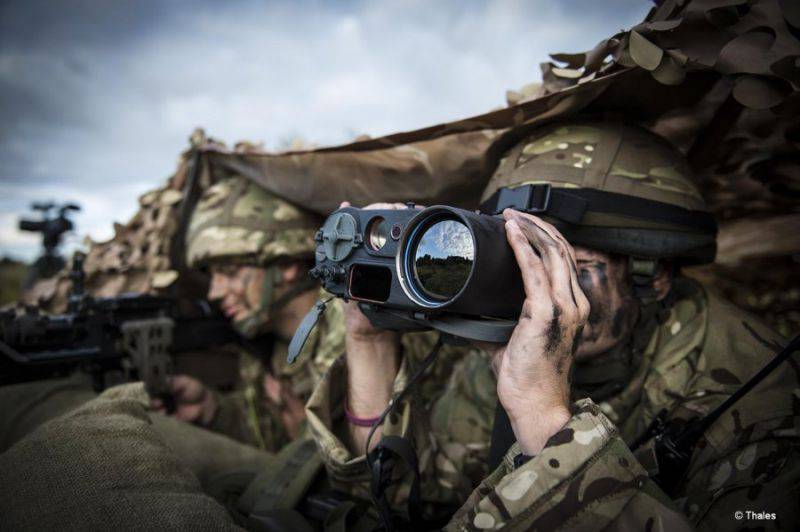
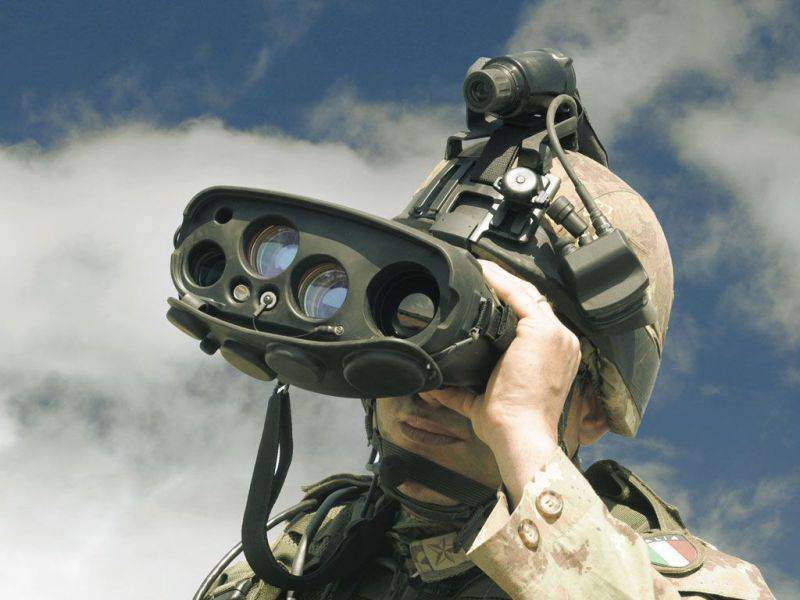
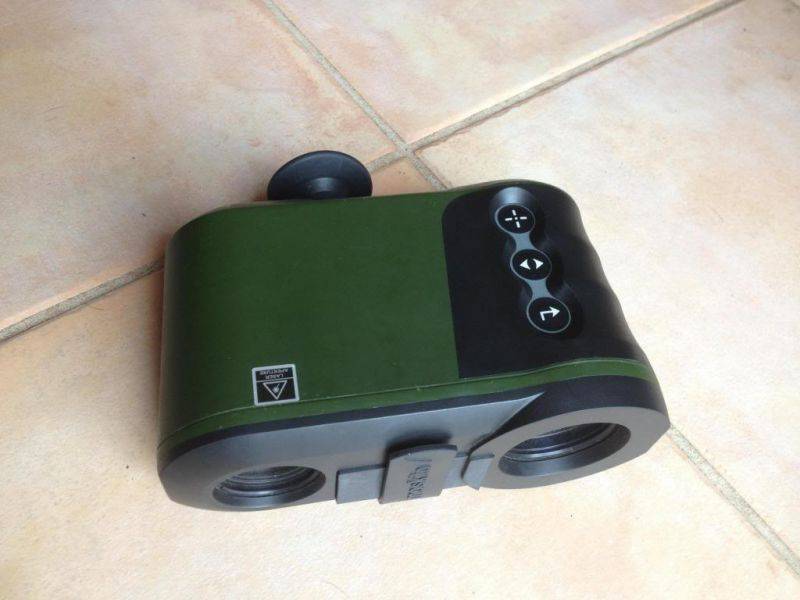
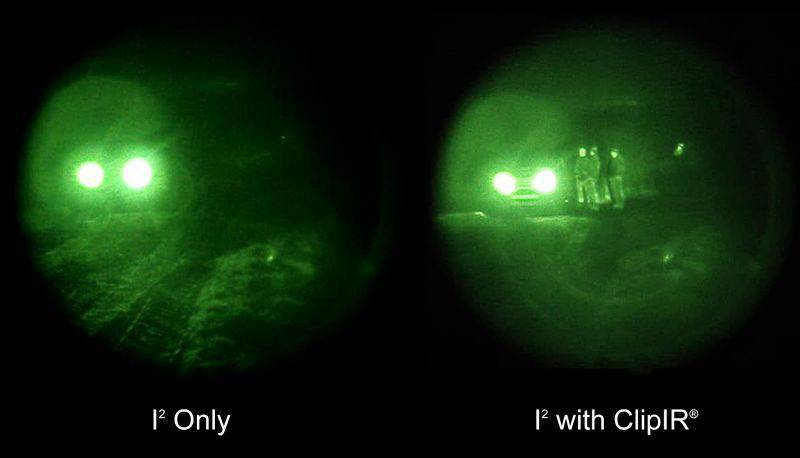
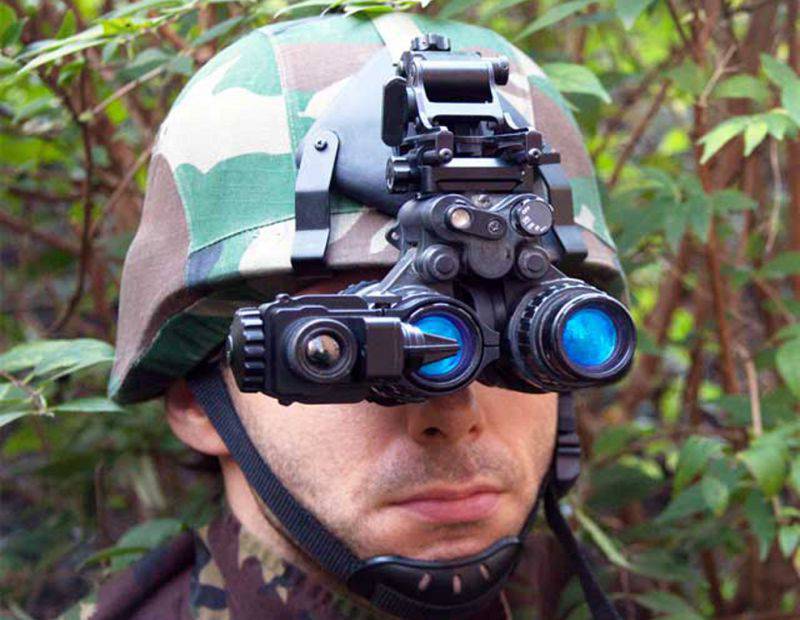
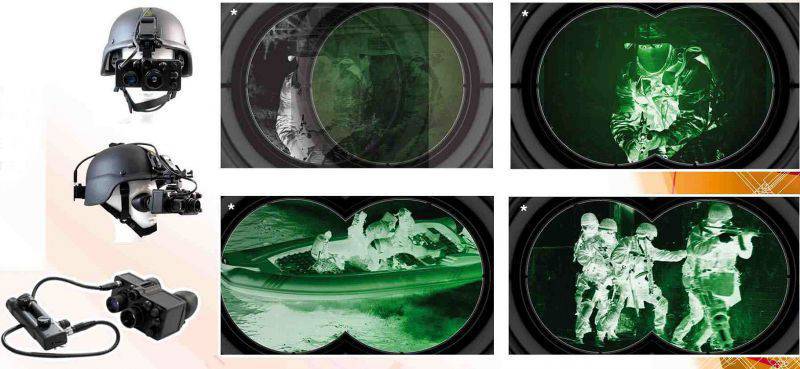
Information